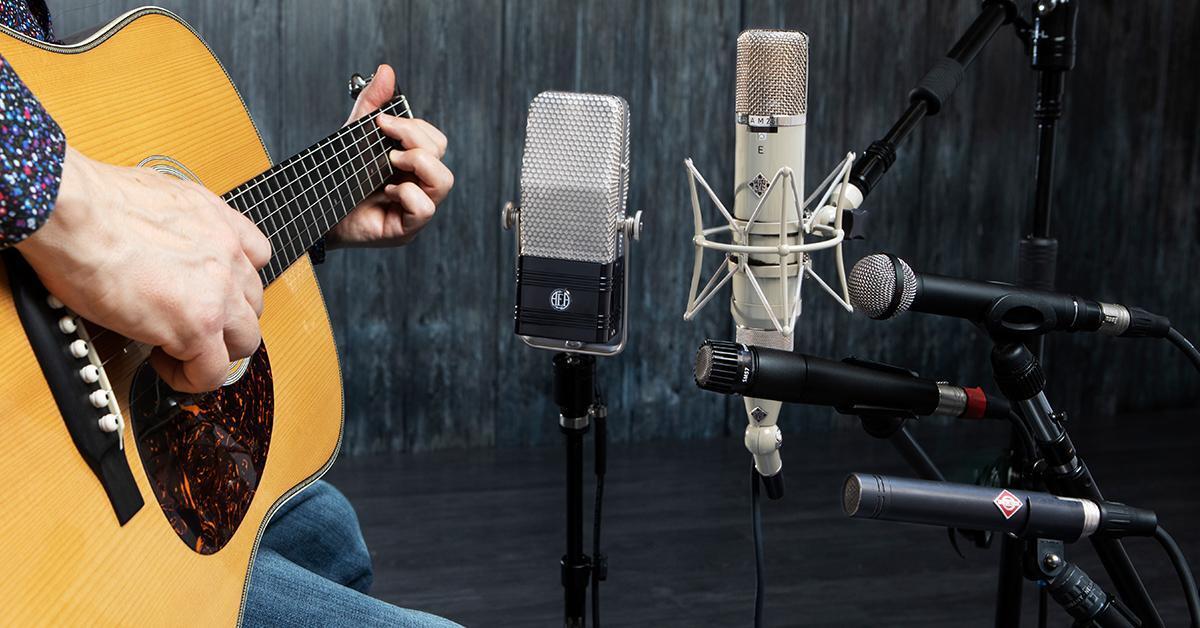I'm not really sure where this fits in(maybe in the big thread), but maybe it deserves its own thread:
Each mic design has trade-offs, usually accuracy for noise. The most accurate mics are small omnis, but as the size decreases, the noise goes up. Ya don't hafta be a rocket scientist to figure out why; the smaller diaphragm doesn't put out as much signal as a bigger diaphragm, so you hafta crank it more and you amplify the noise along with the signal.
Condenser mics can only do certain things very well, especially when you get into different patterns. Large diaphragm mics get wonky off axis (which means they can be shitty on sounds coming from a lot of different directions at once). That's why large diaphragm condensers are best as a vocal mic; the mouth is a pretty small source, and ocassionally very quiet. Large condensers are great for picking up quiet sources. Trade offs.
Small diaphragm condenser mics have better off-axis response, so they're "usually" better for miking bigger stuff (guitars, drum kits, choirs, etc.), in other words, anything where the sound is coming at you from a lot of different places. But, because they're smaller, they won't be assensitive as large condenser mics. Trade offs, again.
So what's the best vocal mic? Usually a large diaphragm mic is the first thing the pros reach for.
What's the best mic for larger instruments? Unless you own a very well designed large diaphragm condenser mic, usually a small diaphragm will work better (unless it's a very quiet source and you're willing to give up some accuracy for extra low noise output).
Finally, most mics aren't truely flat - most have little spikes and dips that occur all over the place. The frequency response charts that you see are smoothed to eliminate those short peaks and dips, but they're still there. And they're different for every mic - even two that are exactly the same brand and model.
Now here's the important part: When you happen to sing or play a note that corresponds to a peak or dip, the sound is gonna change. So, what does that mean? It means that a mic that sounds great on one voice, one guitar, or even in one key, may sound very different on another voice, another guitar, or even in a different key.
And that's where the problem lies when people try to compare a mic to other mics, and especially when you hear people say things like "this Chinese mic sounds identical to a U87", or whatever. For that singer, that guitar, or in that key, that may be true. It just means that the peaks and dips in the two mics didn't get pushed so hard that you could hear the differences between the two mics. On something else, the differences can be night and day.
The other factor is that, unless you've been doing this stuff for a long time, you're ear isn't trained to hear some of the differences, and you'll think only in terms of louder and brighter, or more bottom. It's really easy to miss hearing the small peaks and dips, which only comes with longer listening sessions and some ear training. When you compare mics, if a mic sounds "brighter", or "more detailed", make sure you're not confusing high frequency peaks and/or treble boost for those qualities.
While it's not cut and dried, be suspicous of louder mics - it usually means that accuracy has been sacrificed, and try to figure out where that "extra loudness" is coming from. Remember, "bigger" means "louder", but it also means "less accurate". "Less accurate" is not in itself a bad thing, if it's more flattering, but just be aware that it is less "accurate".
There are always trade offs in choosing equipment; try to make those trade offs work for you over the long haul, and you'll be fine when choosing a mic for a particular task.
The "big thread" covers a lot more detail about those trade offs, but remebering these points (that we've just discussed) may just help you hear "better", faster.

